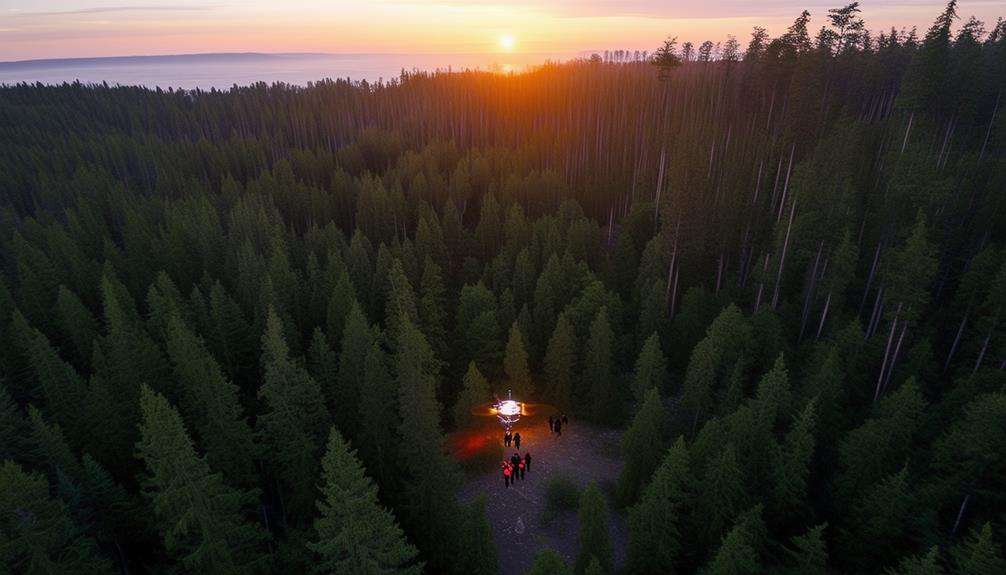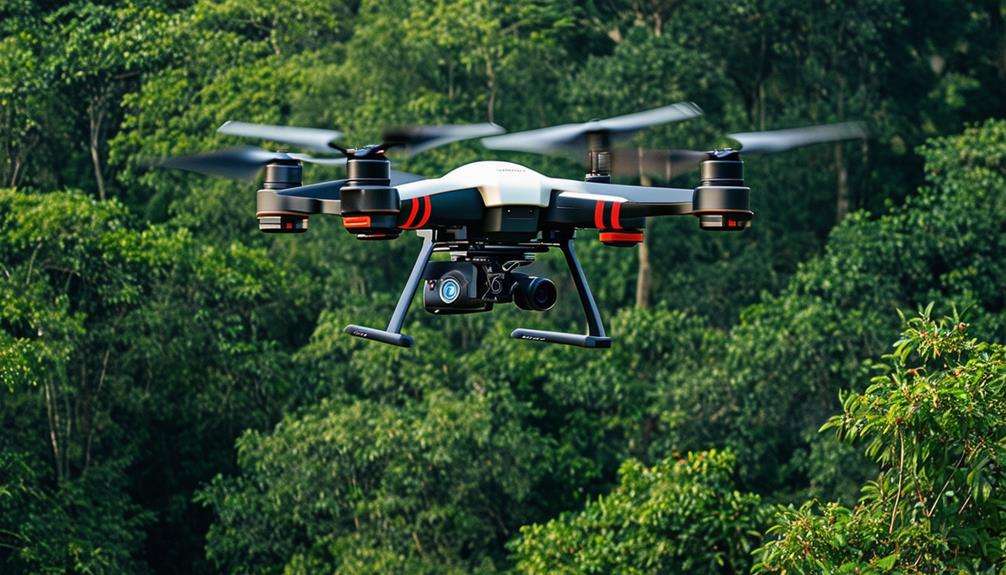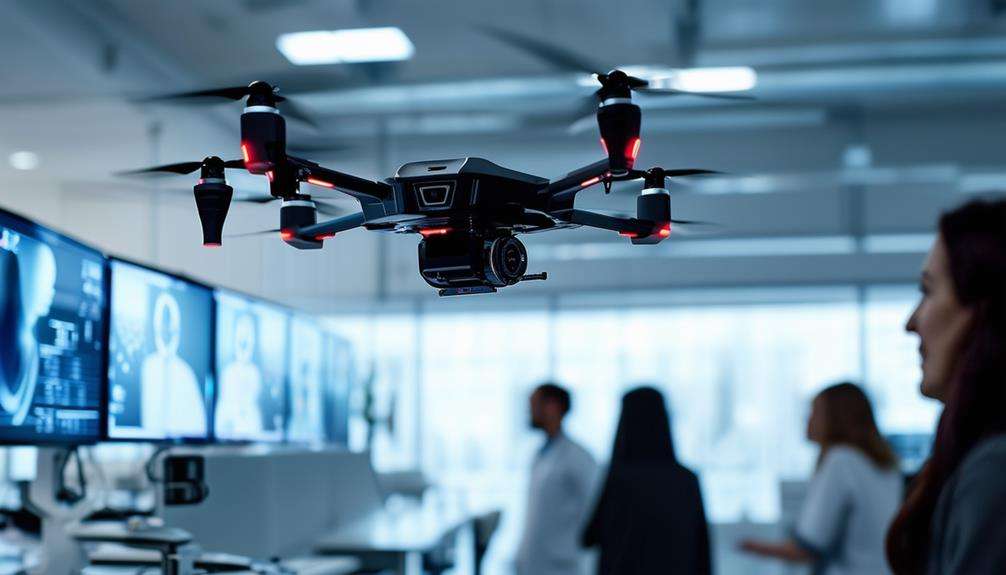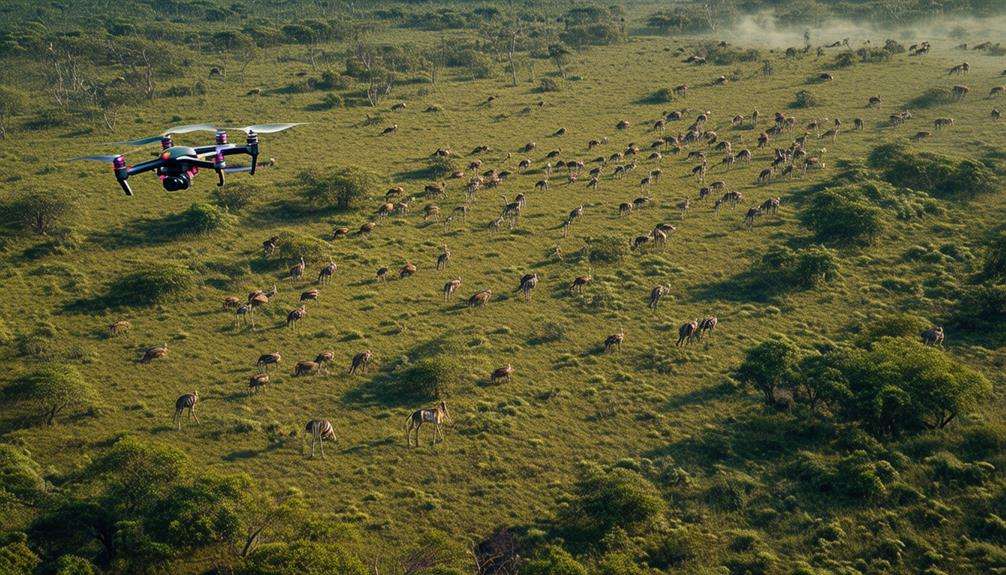Did Drones Exist in the 80s?
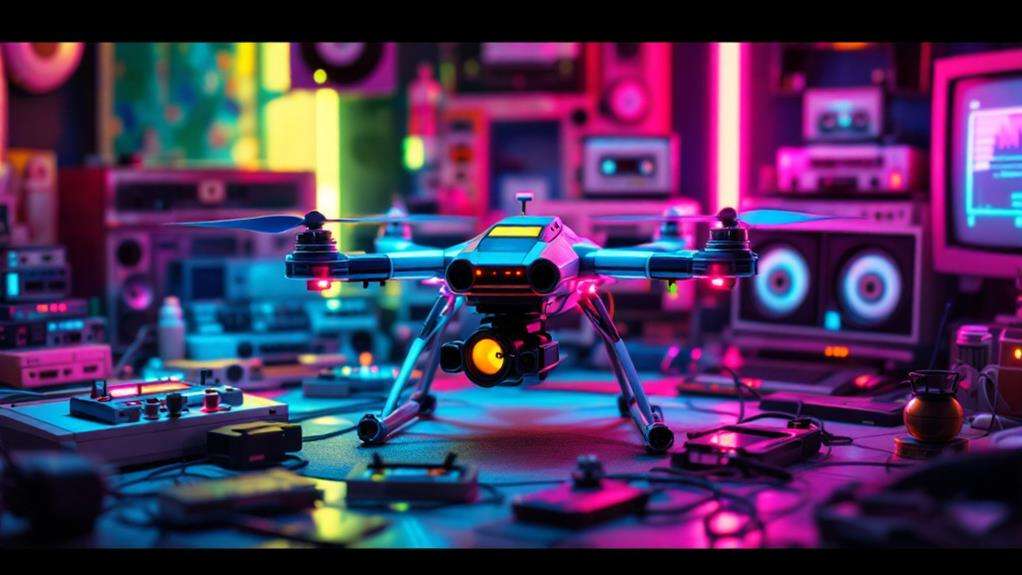
Yes, drones did exist in the 1980s, and they played a critical role in military operations. During this decade, advancements in UAV technology led to the development of notable models like the Ryan Firebee and the RQ-2 Pioneer. These drones were primarily used for reconnaissance missions, providing valuable intelligence while reducing risks to pilots. Israel's innovations significantly impacted drone capabilities, showcased during conflicts like the 1982 Lebanon War. Although technological limitations like short battery life and limited navigation existed, the foundation for future UAV developments was laid. Explore further to uncover how these advancements shaped today's drone landscape.
Key Takeaways
- Yes, drones existed in the 1980s with significant advancements in UAV technology.
- The Ryan Firebee and RQ-2 Pioneer were prominent military drones used for reconnaissance.
- Israel led UAV innovations with models like the Mastiff and IAA Scout.
- Drones played a vital role in the 1982 Lebanon War, enhancing military strategies.
- Limitations included short battery life and manual control requirements during the 1980s.
Early UAV Developments
In the 1980s, the development of UAVs marked a significant turn in military technology. During this time, Ryan Firebee drones were also deployed for reconnaissance missions, showcasing the evolving capabilities of UAVs. You'd find that Israel led the charge with innovations like the Mastiff and IAA Scout drones, which transformed military surveillance and reconnaissance. These UAVs played a crucial role in the Battle of Jezzine in 1982, where their ability to gather and relay information changed the course of combat against Syrian forces. The impact of these drones was undeniable, showcasing how technology innovations could redefine warfare strategies.
During this decade, the U.S. military began to see the potential of drones, especially after the Vietnam conflict. Recognizing their value, efforts to expand UAV capabilities increased. This period saw the birth of the RQ-2 Pioneer in 1986, a pivotal advancement in UAV technology. It was instrumental during the Gulf War, providing real-time reconnaissance and combat support, which underscored its strategic importance.
Military Drones in the 1980s
During the 1980s, military drones truly began to prove their worth on the battlefield. With the Lebanon War as a backdrop, drones became indispensable tools for reconnaissance and intelligence gathering. Israel set a remarkable precedent with their cutting-edge UAV technology, utilizing models like the Mastiff and IAA Scout. These drones were pivotal in the 1982 Battle of Jezzine, providing crucial intelligence that turned the tide against Syrian forces.
The U.S. also recognized the potential of military drones, leading to the development of the RQ-2 Pioneer in 1986. This drone advanced battlefield surveillance and coordination, minimizing pilot risk and enhancing operational capabilities. The investment in UAV technology during this era marked a shift in military strategies, highlighting the importance of drones in modern warfare.
Here's a snapshot of the military drone landscape in the 1980s:
| Country | Notable Drone Model |
|---|---|
| Israel | Mastiff, IAA Scout |
| USA | RQ-2 Pioneer |
| Event | Lebanon War, Battle of Jezzine |
| Role | Reconnaissance, Intelligence Gathering |
The 1980s were indeed a transformative period for drones, setting the stage for their expansive role in military operations worldwide.
Key 1980s Drone Models
The 1980s drone landscape introduced groundbreaking models that revolutionized military operations. You'd find the RQ-2 Pioneer, a standout during this era, enhancing reconnaissance and surveillance with its impressive UAV capabilities. This model played a crucial role in various military operations, offering an unprecedented level of intelligence gathering. Another notable model, the MQM-57 Falconer, emerged as the first drone specifically designed for battlefield reconnaissance. Its introduction marked a significant shift towards more specialized UAV applications, allowing for more precise and effective military strategies. During the Lebanon War in 1982, Israeli drones demonstrated the power of drone technology by providing critical intelligence, showcasing their effectiveness in modern warfare scenarios. This success highlighted the potential of UAVs, prompting the U.S. military to invest more in drone development post-Vietnam. You'd see a notable leap in drone technology during the 1980s, especially with the integration of GPS technology. This advancement improved navigation and targeting, making UAVs more reliable and accurate in military operations. These key 1980s drone models set a new standard for intelligence and reconnaissance, proving indispensable in shaping future warfare tactics.
Technological Limitations in the 80s
While the 1980s saw significant advancements in drone technology, these innovations were not without their challenges. You'd find that limited battery life and payload capacity significantly constrained operational durations, impacting the effectiveness of surveillance missions. Without the sophisticated GPS technology we rely on today, drone navigation and targeting systems lacked the precision and reliability needed for accurate operations.
In this era, drones primarily depended on analog communication systems, which imposed restrictions on both range and the quality of real-time data transmission. This made it difficult to conduct extended missions or relay high-quality information back to operators swiftly. Additionally, the absence of advanced materials and lightweight composites meant that drones were bulkier and less maneuverable, hindering their effectiveness in various applications.
Moreover, the limited advancements in automation and artificial intelligence of the time necessitated significant human intervention. For flight control, operators had to manually manage many aspects of the drone's operation, which was both labor-intensive and error-prone. The technology simply wasn't advanced enough to allow drones to operate independently, which limited their potential and versatility in the field. Despite these constraints, the groundwork was being laid for future innovations.
Transition to Modern Drones
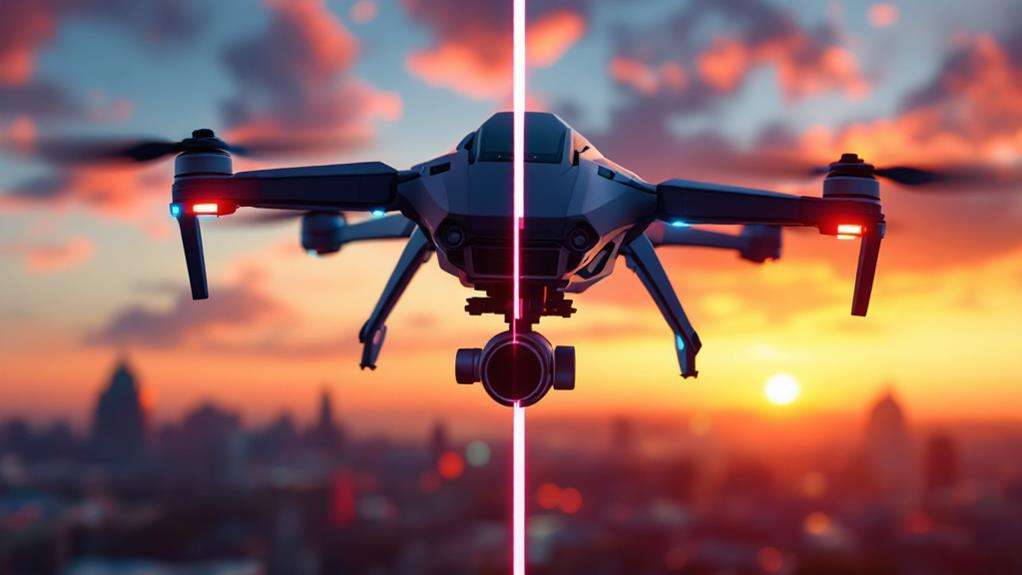
Many advancements in the 1980s laid the foundation for the transition to modern drones. During this pivotal decade, drone technology saw significant breakthroughs, particularly with the development of the RQ-2 Pioneer. This military UAV enhanced aerial photo reconnaissance and security surveillance capabilities. As you might guess, the U.S. military was quick to recognize the potential of UAVs for reconnaissance missions, prompting increased investment in their operational capabilities.
Following the Vietnam War, there was a clear shift toward improving endurance and remote control functionalities in UAVs. A key moment came with the 1982 Battle of Jezzine, where drones effectively showcased their military potential. By the late 1980s, innovations such as GPS and lightweight materials began transforming UAV design, paving the way for advanced drones with improved performance.
These military-driven developments didn't just stay on the battlefield. They laid crucial groundwork for the subsequent rise of the consumer drone market. As military technologies were repurposed, the operational capabilities of drones expanded, making them accessible for commercial use. This transition marked the beginning of a new era where drones became integral to various industries beyond military applications.
Impact on Military Strategies
As drone technology evolved in the 1980s, its impact on military strategies became increasingly apparent. During the Iran-Iraq War, Iran's use of the Qods Mohajer-1 for reconnaissance missions highlighted the tactical advantages UAVs offered in combat. These drones allowed for effective aerial surveillance, providing crucial intelligence that informed military decisions without risking personnel.
In the wake of the Vietnam War, the U.S. military recognized the potential of drones, leading to the development of the RQ-2 Pioneer. This UAV proved invaluable during the Gulf War, enhancing reconnaissance capabilities and enabling precise target acquisition. By operating in hostile environments remotely, drones reduced direct human involvement, thus minimizing the risk to soldiers.
The 1982 Battle of Jezzine further demonstrated UAVs' effectiveness in military operations. Their integration into combat planning marked a significant shift in how aerial surveillance and reconnaissance were conducted. These advancements in the 1980s set the stage for ongoing military investment in drone technology, ultimately culminating in the widespread use of armed drones in later conflicts, such as the Iraq War. Overall, drones revolutionized military strategies, reshaping the battlefield landscape with their strategic versatility.
Civilian UAV Uses Post-1980s
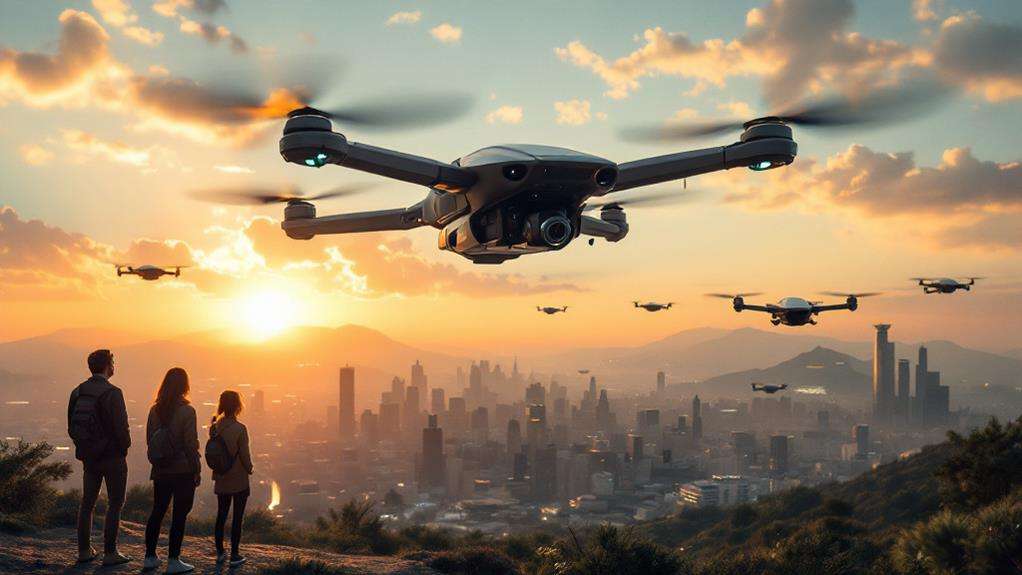
The evolution of drone technology in the 1980s laid the foundation for its transition into civilian uses, which began to surface post-1980s. Initially, advancements were driven by military applications, with drones being pivotal for surveillance during the Iran-Iraq War. However, these 1980s innovations soon found pathways into the civilian sector. One of the first civilian UAV uses was in aerial photography and agricultural monitoring, although these applications were modest compared to their military counterparts.
By the late 2000s, the landscape for civilian drone technology underwent a significant transformation. Companies like DJI emerged, capitalizing on the technological groundwork laid in the 1980s. They introduced consumer-friendly UAVs, making drones accessible for a variety of civilian applications such as photography and mapping. This marked a notable shift from exclusive military use to broader civilian adoption.
The early 2010s saw a further boost when the FAA established regulatory frameworks for civilian drone operations, ensuring safer and more widespread usage. These regulations helped the civilian UAV market flourish, expanding its reach and applications. Thus, the innovations of the 1980s became the backbone for today's diverse civilian drone uses.
Future Prospects for Drone Technology
Frequently, technological advancements pave the way for future innovations, and drones are no exception. The 1980s set the stage for the explosive growth of unmanned aerial vehicles (UAVs) in both military and civilian sectors. You can expect drone technology to continue evolving, enhancing military reconnaissance, combat support, and surveillance. With the integration of GPS technology and improved UAV capabilities, drones are becoming increasingly efficient in targeted strikes and data collection.
In the future, the landscape for drone technology will expand beyond military use, as commercial applications rise. Companies are investing in drones to improve logistics, agriculture, and even entertainment. The challenge will be integrating these UAVs into civilian airspace safely and efficiently. Regulatory frameworks will need to adapt to this rapid growth, ensuring that drones can coexist smoothly with traditional aircraft.
| Application | Potential Growth | Key Considerations |
|---|---|---|
| Military | Advanced UAV capabilities | Ethical use in combat support |
| Commercial | Logistics and delivery | Integration in civilian airspace |
| Surveillance | Enhanced data collection | Privacy and legal issues |
As drone technology advances, it's crucial to address these considerations to maximize benefits and minimize risks, ensuring drones' seamless integration into everyday life.

